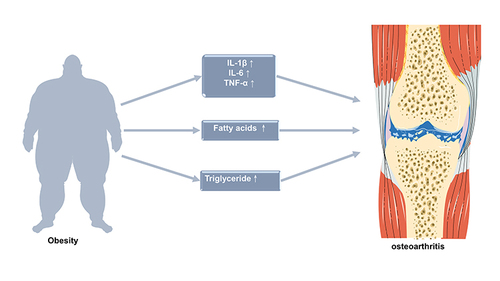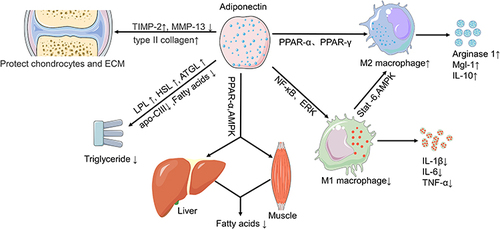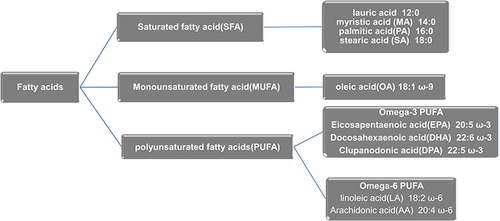Figures & data
Figure 1 Possible mechanisms of obesity leading to osteoarthritis. IL-1β, interleukin 1 β. TNF-α, tumor necrosis factor-α.

Figure 2 Possible mechanisms by which adiponectin regulates risk factors for OA in obese patients.

Table 1 Inflammatory Factor Involved in the Pathophysiology of OA
Table 2 FAs Involved in the Pathophysiology of OA
Table 3 Adiponectin and FAs

